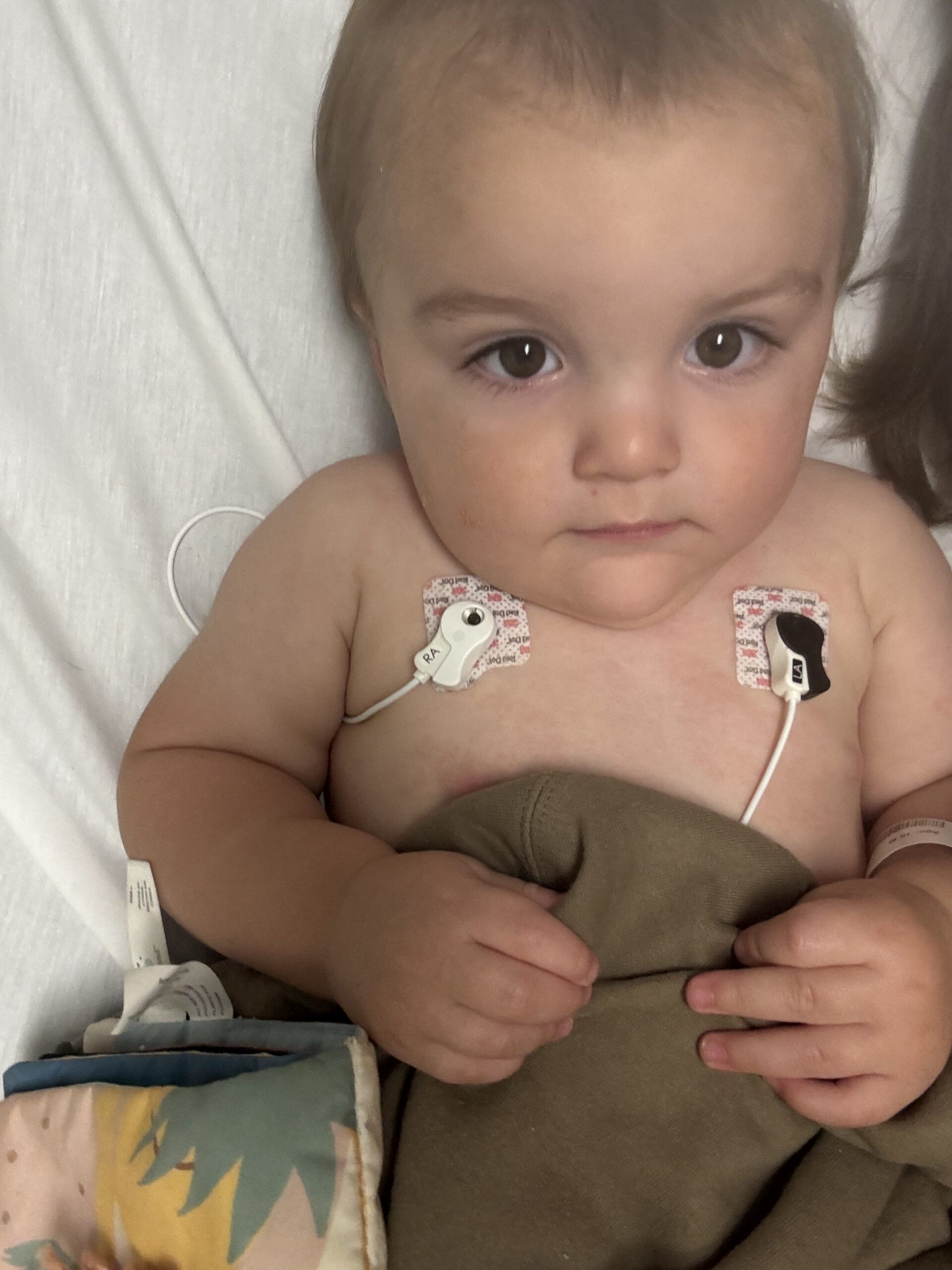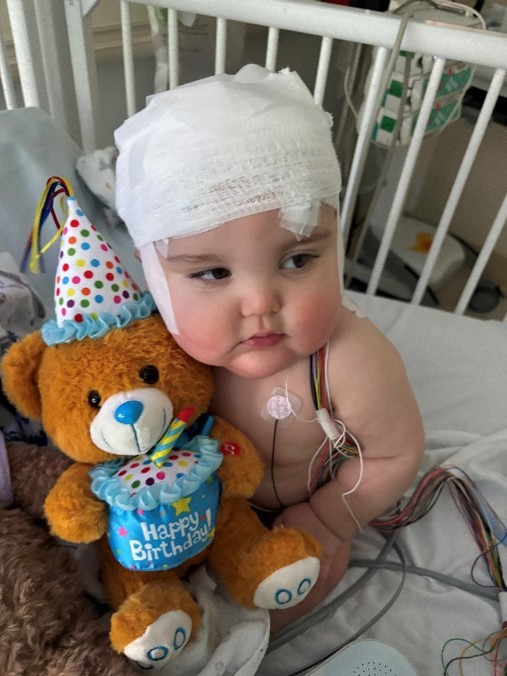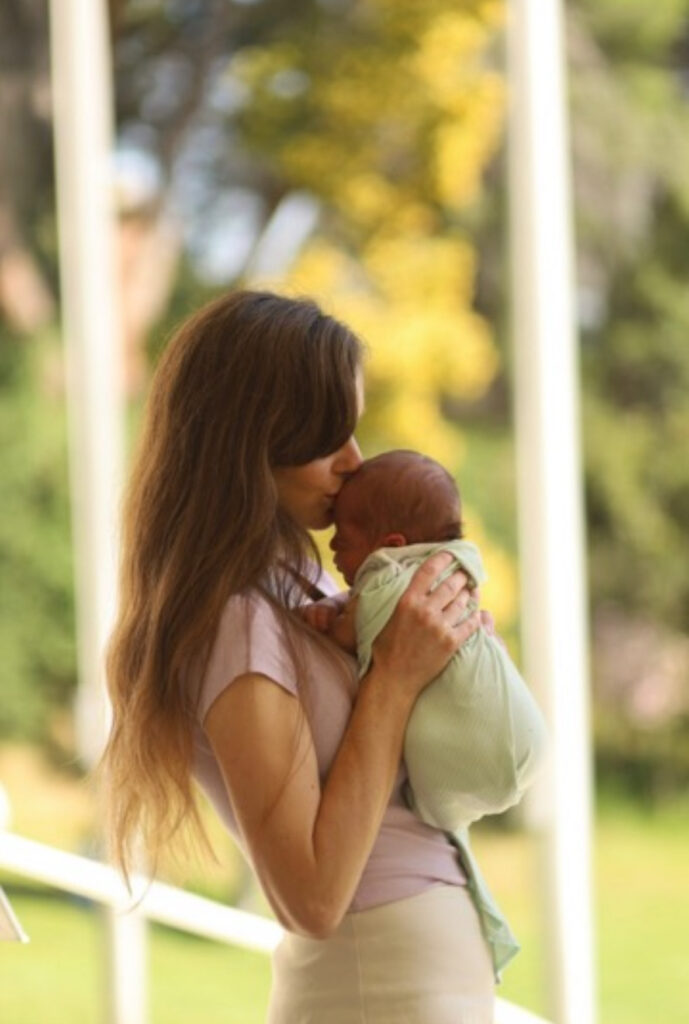“Even if they outgrow the spasms, they remain at a much higher risk of developing another seizure type throughout their life.”
This statement is all too familiar to every parent of a child with infantile spasms. The chilling truth that keeps us up at night. This reality feels too open-ended, leaving us with many questions and even more concerns. What other types of seizures are we talking about? When are they truly out of the woods? How will I know if they have another seizure type? Their whole life? These questions, and dozens more, bombard you as you try to figure out what to ask and when, only to be met with the most honest (and most unsettling) answer: We really don’t know.
Children with infantile spasms come from every demographic, every walk of life, varying etiologies. They go on to lead very different lives, with varying levels of functionality. But one thing is true for them all: Having West Syndrome increases the risk of other seizures. According to one study published in BMC Pediatrics, up to 60% of children with infantile spasms go on to experience other seizure types, even after the spasms have ceased. Another reputable source (National Institute of Neurological Disorders and Stroke ) supports that more than half of children affected by West syndrome eventually develop other forms of epilepsy, including conditions such as Lennox‑Gastaut syndrome or focal/multifocal epilepsy types.
For Owen, we believe his last spasm was in early April 2025, just 2 days before his first birthday. We’re grateful for these past months spasm free, because while spasms can seem subtle, they are among the most devastating seizure types and are proven to cause brain damage. Over the past few months, I’ve debated many times whether to send a video to his doctor of something unusual I’ve seen, a blank stare, a twitch, a sound; wondering; Was that a seizure? Or just stimming? Or an involuntary movement?
The gray area is huge. Often, the short outpatient EEG lasting 40 minutes to two hours, if you’re lucky won’t capture the exact behavior you’re worried about. Documenting with videos can help, but I’ve learned that if I can rouse Owen out of it, whether it’s a blank stare or odd movement, it’s probably not a seizure. Despite reassurance from his neurologist, I’ve kept questioning some of the things I’ve seen. Still, he’s been developing and catching up on milestones, something I hold onto tightly and am so incredibly proud of him for.
Last Sunday, I saw something that I am nearly certain was “another seizure type.” I’d been bracing myself for this moment. It happened during what should have been a joyful evening, we had just opened Owen’s Lovevery box for months 16–19. I was sitting with him in his padded play area that we fondly call his “O-Zone,” surrounded by colorful toys and cheerful sounds.
While assembling a new toy, I noticed Owen had fallen back on the mat. Not totally unusual for him, but when I looked over, his breathing was strange, abrupt, short, with hiccup-like sounds. His eyes were rolled completely back. He wasn’t moving much, maybe just twitching. Terrified, I tried to snap him out of it, no response. I picked him up, his head falling back, and he stayed this way for what felt like forever (but was about two and a half minutes). I called 911 for the first time in my life.
In socks and pajamas, I ran into the street so the ambulance wouldn’t miss our backhouse on a gridlocked LA side street. In the ride to the hospital, I explained Owen’s West syndrome diagnosis to the EMTs, something no one on the crew had heard of. While he slowly returned to awareness, I shared my “canned” West syndrome speech, hoping it might help them help someone else one day.
By the time we reached the ER, Owen was lethargic but breathing normally, a little pale, sweaty, making eye contact. Vitals were stable. Neurology wasn’t in-house on a Sunday night, so the ER physician deferred to Owen’s neurologist for the following day.
After a few more uneventful hours, we were discharged. Unfortunately, Owen’s neurologist was out the next week, so we spoke with colleagues who advised waiting until his doctor returned. I pushed to no avail.
Since last Sunday, I’ve been watching my sweet boy like a hawk. No repeats, but I’ve noticed subtle spells of altered awareness, sometimes while tired, eating, or playing. Thankfully, none have been as severe as last Sunday.
So was this one of his “other seizure types”? What kind of seizure was it? Generalized onset? Unknown onset? Focal onset? Motor? Awareness? Absence? How will we know? What will the next EEG show? Will it show anything?
These questions are not unique to us, they haunt every epilepsy parent whose baby has had infantile spasms. This “other seizure type” is the dark, stormy cloud we all live under.
Since last Sunday, I’ve held Owen even closer. I’ll keep holding him closer every day. I hope we get answers, but I know some families never do.
You can’t stop living while you wait for answers. But you can push for the attention and care your child deserves, with the goal of giving them the best life possible.
Despite the chaos and lingering uncertainty, we continue to live. We hike, we swim, we eat, we read, we cuddle, we play. And we will get our answers.
Citations:
National Institute of Neurological Disorders and Stroke 2019. NINDS Infantile Spasms Information Page.
Wheless, J.W., Gibson, P.A., Rosbeck, K.L. et al. Infantile spasms (West syndrome): update and resources for pediatricians and providers to share with parents. BMC Pediatr 12, 108 (2012). https://doi.org/10.1186/1471-2431-12-108



